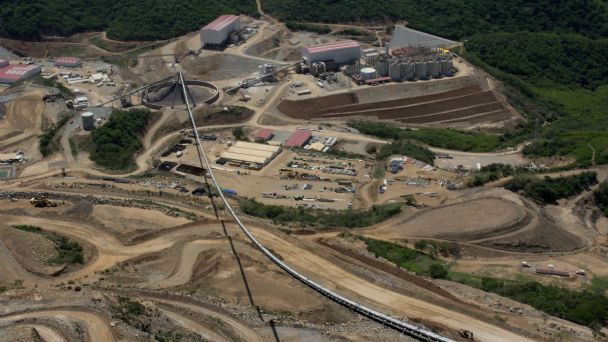
Following more than 800,000 metres of drilling and intense preparation, financing and community relations works, in addition to obtaining hundreds of permits and constructing the actual mine, it was in April 2011 that the first gold bar was poured at Osisko Mining’s Malartic mine in Canada.
The pouring of this gold bar represented a sight that had not been seen in Malartic for 28 years previously and what followed a month later was the commencing of commercial production. Today the Canadian Malartic deposit is recognised as being one of the largest gold reserves in production in the country with proven and probable reserves of 10.11 million ounces of gold. In fact this figure continues to grow to this day through on-going drilling on adjacent mineralised zones.
Osisko Mining Corporation, a mid-tier gold producer based in Montreal, Quebec, is a mining company focused on acquiring, exploring, developing and mining gold properties. In addition to the Canadian Malartic gold mine in Malartic, Quebec, Osisko continues its exploration work on the Hammond Reef Project in Northern Ontario, the Kirkland Lake Project in North-eastern Ontario, as well as other projects elsewhere in Canada and around the world.
The Canadian Malartic gold property is very much the flagship asset of the company. Located in the heart of Quebec's prolific Abitibi Gold Belt, immediately south of the town of Malartic, approximately 20 kilometres west of the town Val d'Or, the property includes the former Canadian Malartic underground mine, which produced more than one million ounces of gold from 1935 to 1965 from ore containing three to six grams of gold per tonne.
The deposit is an Archean porphyry gold system, consisting of a widespread shell of disseminated gold and pyrite mineralisation hosted by diorite porphyry and altered metasediments. Drilling and compilation work has outlined a gold mineralised system measuring 1900 metres by 350 metres, with a variable true thickness ranging from 40 to 270 metres to a vertical depth of 320 metres from surface. The system is open to the west and to the south at depth.
Between August 2009 and May 2011, Osisko invested more than $1 billion in capital expenditure into building its large-scale mining complex, with more than half of that figure being spent directly in the Abitibi-Témiscamingue region. Today, the Canadian Malartic Mine employs more than 700 people, most of them from Quebec, and they are the face of Osisko.
Osisko Mining commenced commercial production effective May 19, 2011. Commercial production is determined within the gold industry as the first continuous 30 day period of plant operation at a rate of 60 percent of design capacity, which is 33,000 tonnes per day for the Canadian Malartic Mine.
The company’s focus in 2013 is centred on synchronising the mining and milling operations in order for the mine to reach its full production capacity. Part of this mission involved the construction of a second crusher plant that was completed at the end of the first quarter. This new plant incorporates the use of an XL Raptor 2000 crusher, which are among the largest cone crushers found anywhere on the planet, and its use will allow the mine to ramp up production further still by the end of the third quarter
The main challenge that Osisko, and the vast majority of other miners throughout the world for that matter, faces today is its ability to attract and then retain a multi-skilled workforce, and the costs associated with that. The industry is facing a shortage of technical men and women with the required expertise to take a project like the company’s Canadian Malartic Mine forward and Osisko knows full well that no matter how good a plan may look on paper, in order for it to succeed it needs to have the right people in place to implement it.
In a concerted effort to combat this challenge the company are now in the process of identifying suitable third year graduates who would be interested in joining Osisko on a four year course of employment. At the end of this course these graduates will have gained all the necessary experience to potentially embark on a long-term career at Osisko.
On 9 April 2013 the company released a preview report of its operational results for the mine for the quarter ending 31 March 2013. Highlights during the first quarter of the year included achieving record gold production of 106,047 ounces, record total tonnage processed of 4.23 million tonnes and record average daily tonnage processed of 48,389 tonnes per day, based on 87.5 operational days.
The month of March also saw the company achieve record one-month gold production of 42,521 ounces, record one-month tonnage processed of 1.59 million tonnes and record one-month average tonnage processed of 51,439 tonnes per day, all with an average recovery of 88 percent.
Written by Will Daynes, research by Jon Bradley
DOWNLOAD
 Osisko-AM-Mining-June13-Bro-s.pdf
Osisko-AM-Mining-June13-Bro-s.pdf













